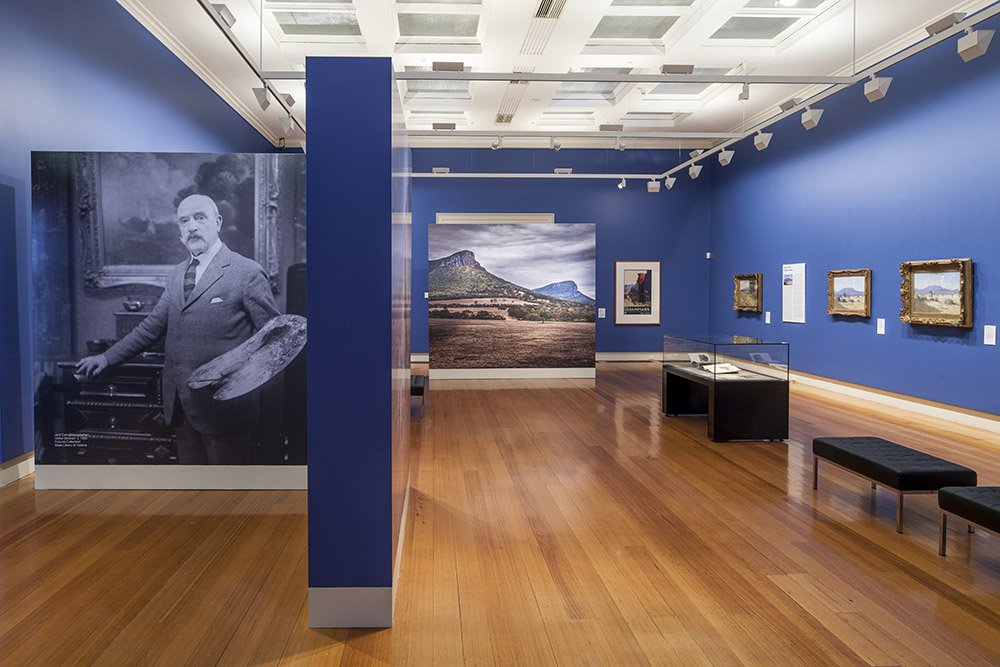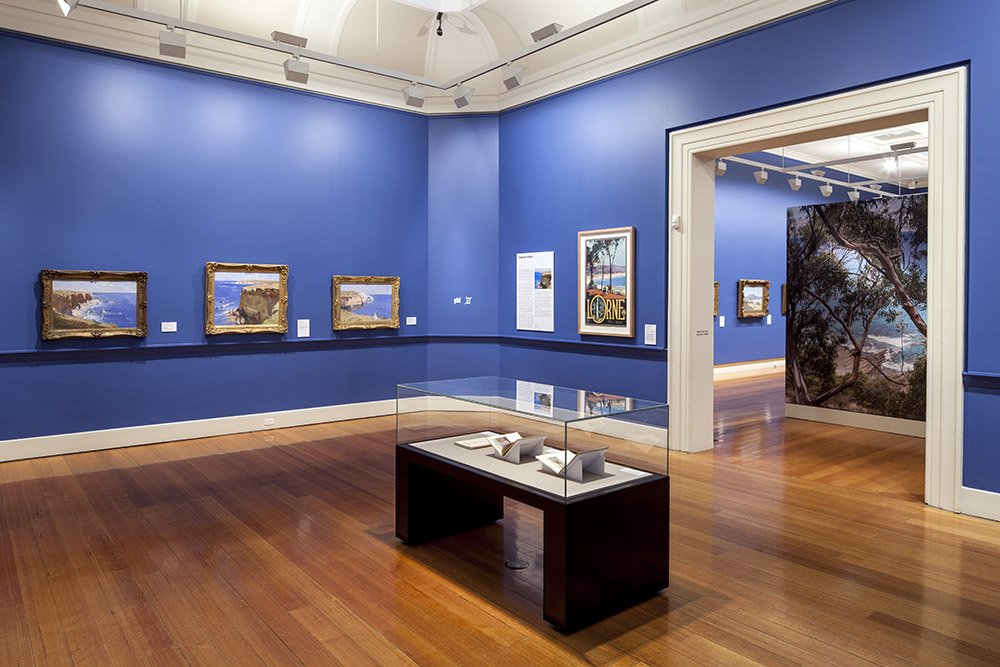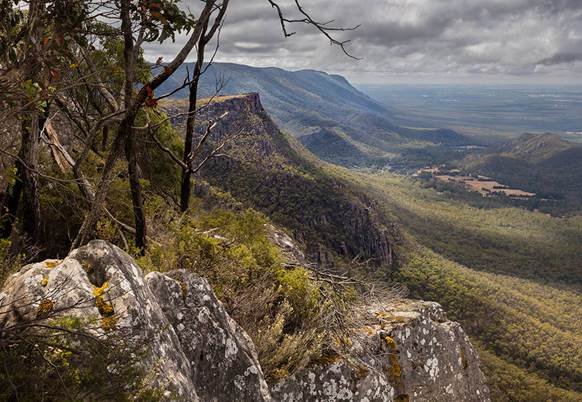Land of the Golden Fleece—Arthur Streeton in the Western District
Bringing together works by one of Australia’s foremost and much-loved artists, the exhibition focuses on Arthur Streeton’s landscape paintings of Victoria’s Western District, and associated coastal vistas, from the years 1920 to 1932 and following the artist’s return from an extended period in Europe. Whilst several of Streeton’s paintings from these years may be familiar to some visitors, it is envisaged that these vividly coloured and virtuoso works will, collectively, be a revelation for audiences.
The exhibition was configured around a narrative sequence tracing the various Victorian (Western District) locations frequented by the artist during this phase of his career, including paintings of Lorne (1921), Port Campbell (1932), Dunkeld, Halls Gap and the Grampians generally.
Undoubtedly one of Australia’s most significant painters, Arthur Streeton was born in 1867 in Duneed, near Geelong. He came to prominence alongside fellow Australian Impressionist painters including Frederick McCubbin, Tom Roberts and Charles Conder in the 9 × 5 Impressions exhibition of 1889. In 1891, the painting Golden summer, Eaglemont (1889) was exhibited at the Royal Academy of Arts in London, and hung ‘on the line’ to widespread acclaim.
Between 1897 and 1920 Streeton lived in London visiting France and Italy, and making return trips to Australia where he staged successful exhibitions of his work and re-engaged with the Australian landscape. He was appointed an official Australian war artist during the First World War. After returning permanently to Australia in 1920 Streeton continued painting grand Australian vistas as well as more intimate subjects such as still-life compositions and his own garden in the Melbourne suburb of Toorak. He retired to Olinda, in the Dandenong Ranges, in 1938, where he died on 1 September 1943.






















